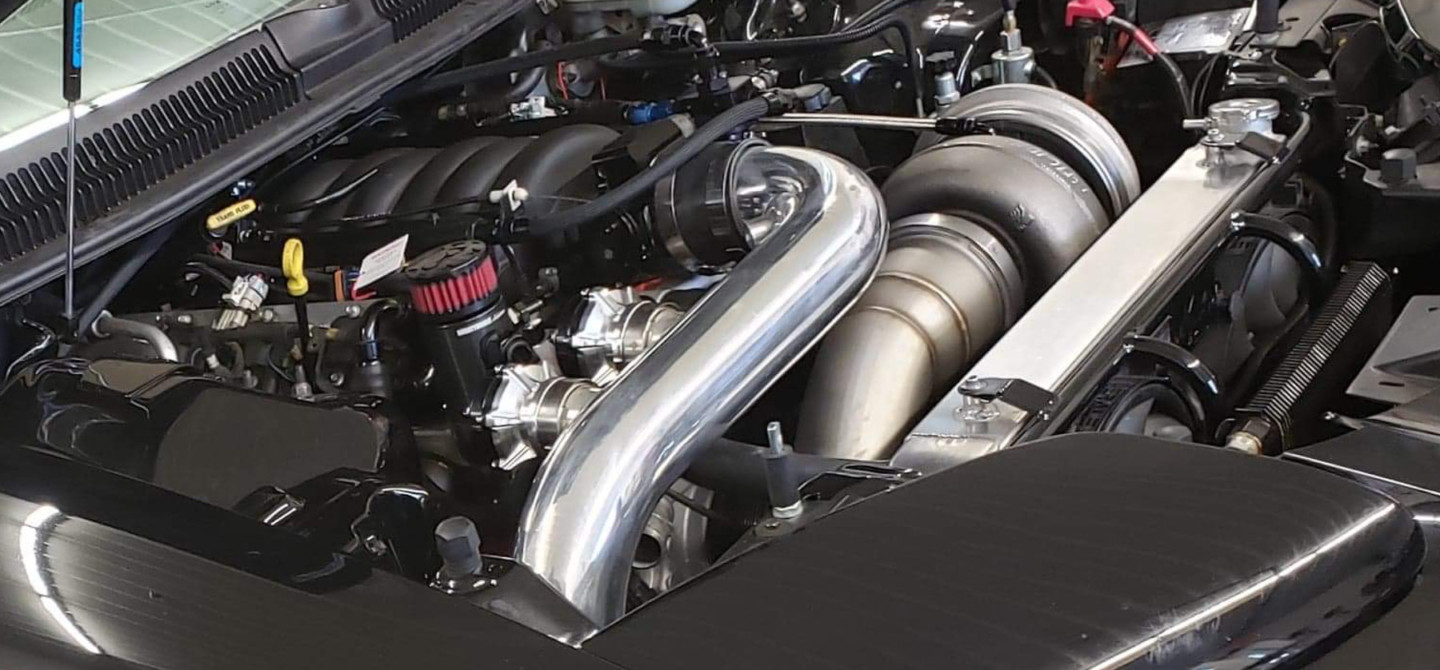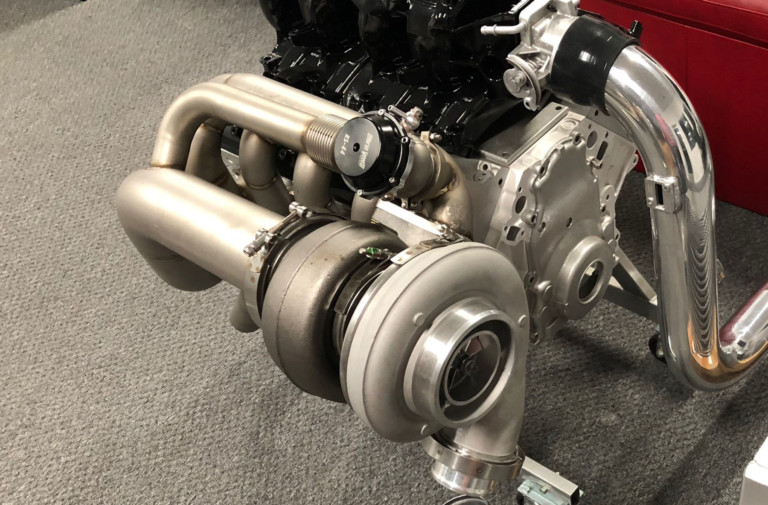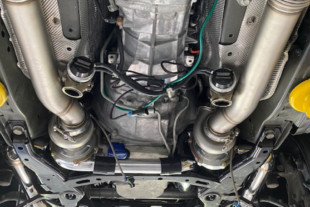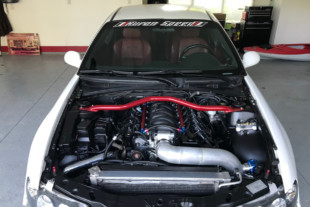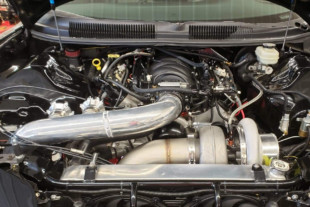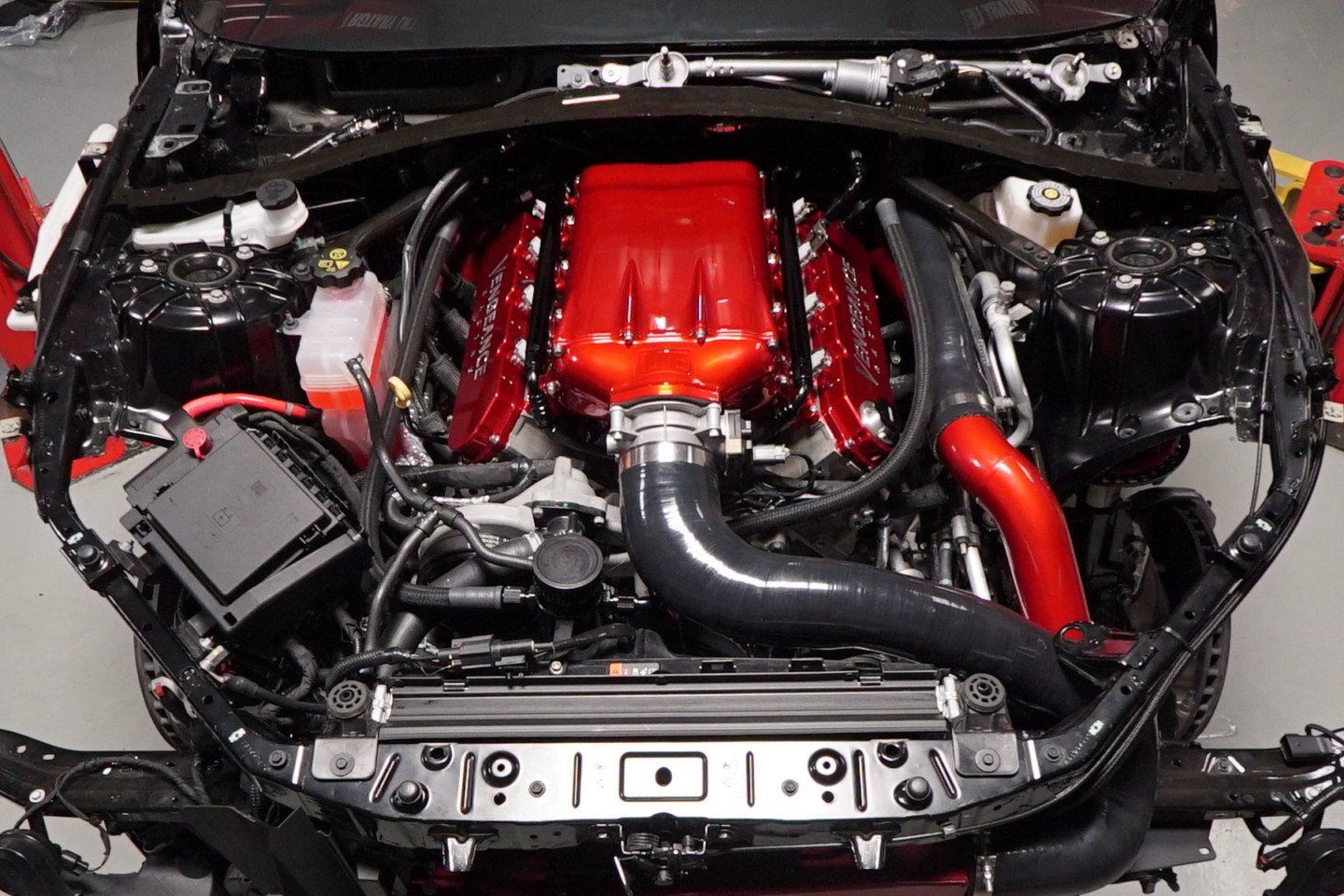Let’s face it, leaving a vehicle stock really isn’t that fun, and adding horsepower just makes everything better. To feed your appetite for extra ponies, a power-adder of some kind is a necessity, and in the LS world that usually involves a turbocharger. In this article, we’ll dive into strategizing an LS engine build for adding some boost.
Despite what the internet will tell you, you can’t just bolt a turbo up to an LS engine and make monstrous horsepower…at least not effectively or with any sort of longevity. It takes the right supporting modifications and parts for that to happen. We’re not going to put a heavy focus on the supporting mods in this article, instead, we’re going to focus on how to size a turbo, and what work is needed to an LS engine for this use. To help provide the best information possible, we brought in Jonathan Ojczyk from Huron Speed, along with engine builders Jimmy Stray, Darren Smithers, and Shawn Hooper at the School of Automotive Machinists & Technology. This panel of experts has plenty of experience and knowledge to provide as it pertains to turbocharging an LS.
It doesn't matter how many turbos you're using, they have to be sized correctly if you want to make good horsepower.
Sizing A Turbo
The first step in any successful project is laying out a roadmap so you have a plan to get to your final destination. When you’re devising with a gameplan for your LS turbo project, knowing what your power goals are, and being realistic about them is the most important step. This doesn’t mean selecting the biggest turbo you can find and building around it, you need to look at the entire picture before you buy anything.
To kick things off, you’ll want to factor into the equation the size of the engine you’re going to use, the parts in the engine, and what the rest of the driveline is going to look like. Ojczyk explains why all of this information is so important when you’re selecting a turbo.
“Based off what a customer wants to do and how they plan to do it, we can get them into a setup that will not only make the power they’re shooting for, but also do our best to ensure it spools well with the engine setup and also caters to their use of the vehicle. For example, we will spec something different for a track car with a transbrake and two-step, as opposed to a street car that has a manual transmission used only occasionally at the track, even when their power goals are similar.”
We typically don’t go any smaller than a 75mm turbine wheel setup on any LS platform for efficiency reasons. – Jonathan Ojczyk, Huron Speed
How the vehicle will be used is very important to keep in mind when you’re shopping for a turbo. You can very easily go too big — sure you’re going to make a lot of power on the dyno, but the power curve could be wrong for how you’re using the vehicle. What that means is your monster-sized snail isn’t making real power until later in the RPM range and feels very sluggish down low. You can also be too conservative with the size of your turbo and the power will fall off dramatically as the exhaust volume chokes when the engine is revved up.

Bigger isn’t always better when it comes to turbos. If you can’t spool the turbo up or it doesn’t make power down low is it really any good?
When choosing a turbo for your combination efficiency is key. With an LS-based engine, the range of turbos you have to choose from is going to be different than other engines based on how the mill functions.
“We typically don’t go any smaller than a 75mm turbine wheel setup on any LS platform for efficiency reasons. We can get them to spool quickly even on a 4.8-liter engine, but any smaller will simply restrict the turbo system from making power. From there, we usually go up to the T6 S400 chassis for single-turbo applications. For most street applications and engines in the 4.8-6.0-liter size range, the 7675-7875 turbos work very well. Their size creates a package that allows the car or truck to retain as many accessories as possible up to the 750-850 rear wheel horsepower zone,” Ojczyk says.
Fortifying The Engine For Boost
The LS platform is highly touted for being boost-friendly, even in stock form…it’s almost like the GM engineers wanted the engine to be a forced induction powerhouse. This boost-friendly framework and availability of the LS engine has made it one of the most popular engines to use for high-performance applications of all kinds. Drag racers in particular love the engines because of the great horsepower to budget ratio they provide.
GM stuffed LS-based engines into virtually every truck, van, and SUV chassis they could, which means there are tons of these engines still available today. SAM Tech’s Hooper shares what you can expect from the different engines when boosting them in stock form.
“All of the engines are great with a turbo, but the 5.3 and 6.0-liter engines are the most popular. The 5.3 is the cheapest and easiest to find, so you’ll see a lot of people use it. With a 5.3 and 6.0, you can see up to 1,000 horsepower on a stock motor if you push them. There are some who have made more, but the gaskets and internal parts are going to struggle past that level to survive.”
The rotating assembly should ideally be rated for higher horsepower and RPM levels than you plan on running. -Daren Smithers, SAM Tech.
Yes, you can make big power by throwing boost at a stock LS engine, however, if you want the horsepower party to last for a long time you’ll need to make some changes to the engine. The stock components just can’t deal with the stress that forced induction can put on them when you really start to crank up the boost.
If you plan on running big boost you'd better make sure your engine is ready for it.
“The main deficiencies with a stock engine are the OEM parts just aren’t designed for the loads of forced induction. Just the bottom end along with the rods, pistons, pins, ring gaps, piston-to-wall clearance, oil pump, and inconsistent bearing clearances that are designed for daily driving just aren’t rigid enough for sustained abuse…not to mention the potential valvetrain issues heavy boost could bring. Because of higher combustion temperatures and factory tolerances, it’s literally luck of the draw in how long the engine will stay together when using stock components in an aftermarket boosted application,” Stray explains.
So, let’s say you want to take your build beyond what the stock components are capable of surviving — where should you start making changes?
A bottom-up approach is the best way to attack the build — the engine is going to need a solid foundation if you plan on throwing a lot of boost at it. After that, you want to start looking at other things that could restrict the engine’s ability to breathe.
“The rotating assembly should ideally be rated for higher horsepower and RPM levels than you plan on running. All pressure is a resistance to flow. A high-flowing induction system will have less restriction, which results in lower boost levels of a more restrictive induction combination at comparable horsepower levels. Cylinder heads affect naturally-aspirated volumetric efficiency, which does affect the pressure ratio, and therefore compressor selection of the turbo,” Smithers says.
Adding more detail to this point, Stray explains why it’s important to build a stout rotating assembly when you’re playing with high levels of boost.
“Because these engines will often see higher RPM levels, if it’s in the budget a center counter-weighted crankshaft is a wise investment. The connecting rods must be capable of withstanding the extra loads associated with boost, too. Choosing the correct wrist pin is vital, we want the lightest pin that will easily withstand higher RPM without flexing, and of course, the correct piston and ring combination is important with a boosted LS application.”
When it’s time to order the custom parts for a turbo LS application, all of your build information needs to be relayed to your engine builder and let them make the call on what you need to use.
“With elevated levels of heat, parts will expand more; loose is better than too tight, and a wise man once told me if it’s too tight everyone will know…too loose, only you will know. Following that advice, be sure the piston manufacturer knows the level of boost you plan on running now, and when you turn it up, so they can recommend the correct piston and clearance. Ring gap is often overlooked — be realistic with your goals if you plan on turning it up because you’ll need to gap the rings based on the added boost. It will save you time and money down the road,” Stray explains.
Putting your budget to work in the right places is going to give you the biggest and best chance for an engine that will make lots of reliable power. Aftermarket cylinder heads are another area you might want to spend good money when you’re trying to reach for the highest horsepower goals possible. A set of heads with a thick deck are where it’s at…they will help make sure the head gaskets stay exactly where they need to be. You’ll also want to make sure the valvetrain is up to dealing with elevated boost levels since there will be more stress put on all of the parts. Another thing you can’t overlook is the fuel system—a boosted application requires a lot of fuel, and underserving it will lead to disaster.
Using the right turbo for your combination will make for a vehicle that's a blast to drive and will provide plenty of reliable horsepower.
“Another vital component is the oil pump—billet gears with a high pressure and volume option are a smart move depending on the requirements of the turbo(s),” Stray says of how to equip your LS engine when you’re pushing the limits with boost. “A performance timing set attached to a camshaft with an LSA designed for boost should also be used. Some of the modifications to the top end would be performance roller lifters, rigid pushrods, and rocker arms with springs capable of controlling the valvetrain at higher RPM. A good quality exhaust valve is also a necessity for longevity…the increased heat is brutal.”
Adding boost to an LS engine is easy, but doing it the right way is a little more of a challenge. There’s more to it than just grabbing a turbo and welding some pipe together. By doing some research and setting realistic goals you can build a potent combination with a factory-stock engine, and selecting the right parts will allow you to build an engine capable of making big horsepower reliably.


